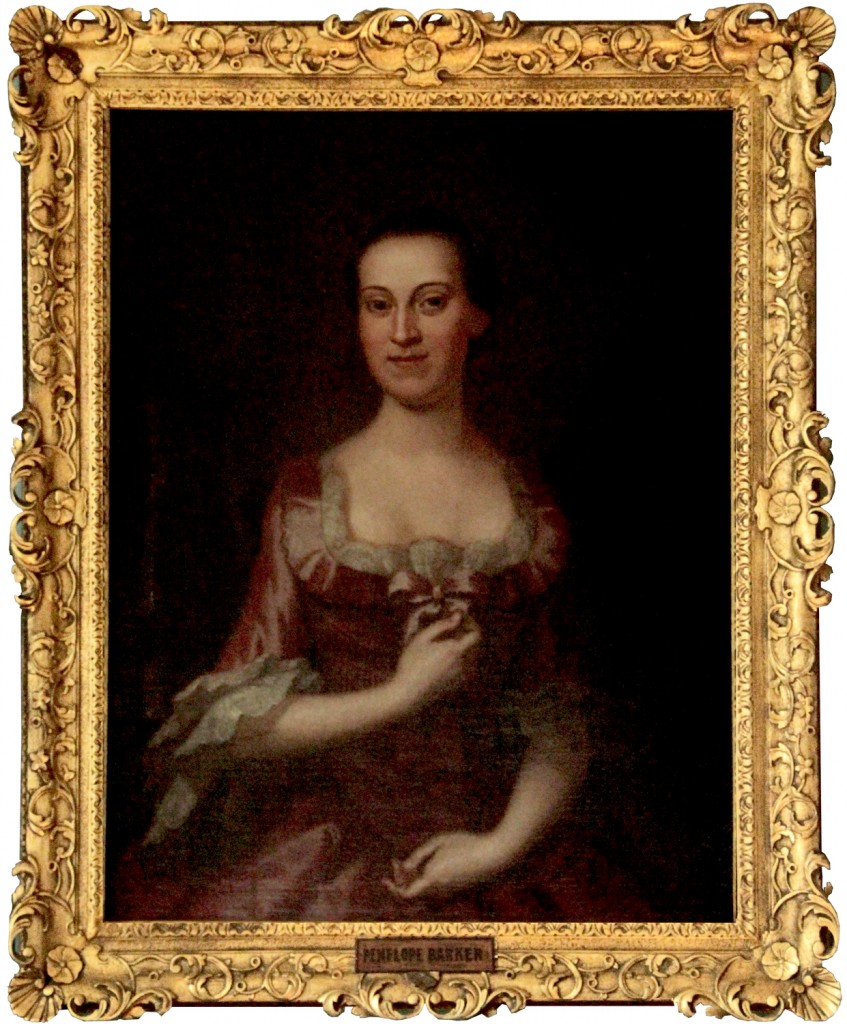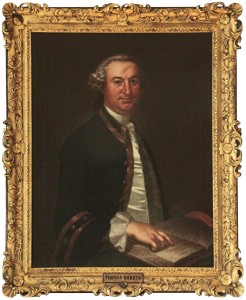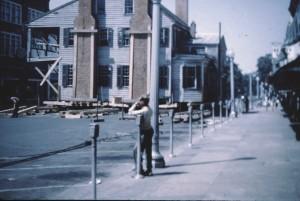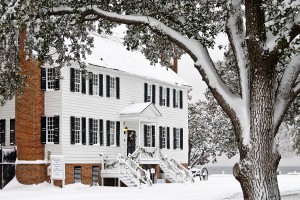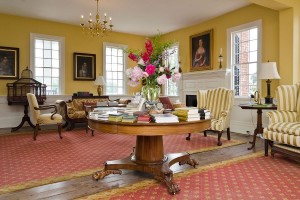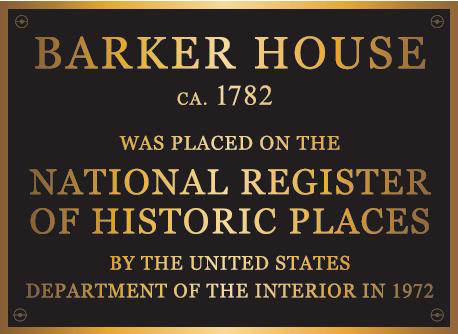
U. S. Department of Interior designation plaque
The Penelope Barker House is Edenton & Chowan County’s Welcome Center – Admission is FREE. Keep up on activities at the Barker House on Facebook. While there, sign up to become a Fan of the Barker House.
The House:
* Thomas and Penelope Barker built the house in 1782. It originally consisted of a parlor wing and half of the hall. The house had three additions between 1782 and the 1840s.
* The house was sold in 1830 to Augustus Moore who added onto it three times.
* The woodwork is Federal in the street-front parlor, Georgian in the sound-front parlor, and Greek Revival in the dining room and kitchen.
* The house has three floors and eight fireplaces.
* Originally located two blocks north, the house was rolled to its present site in 1952. Once it arrived, it was turned 180 degrees so the front on the house now faces the water. Visitors enter through the back door, which in the South means you are very welcome and expected to come back often.
* The Moore family and descendants lived in the Barker House until 1952 when it was sold to Haywood Phthisic who bought it with intentions of donating it to an organization for renovation and preservation.
* That same year, the Junior Chamber of Commerce, Business and Professional Women’s Club, and Edenton Woman’s Club raised monies to purchase the home, move it to its present site, and restore it for public use. The Edenton Historical Commission maintains and operates the Penelope Barker House Welcome Center.
The Edenton Tea Party:
* On October 25, 1774, 51 women signed their names to a petition resolving not to buy or use British goods on which they had to pay taxes.
* It is thought that they signed at the home of Elisabeth King, who did not sign.
* Edenton was a cosmopolitan town as evidenced by the fact that 51 women could read and write. At that time, only one-quarter of colonists were literate and women were even less likely than men to be educated.
* This was the first political action by women in the Colonies and caused quite a stir at home and abroad! A contemporary account, along with the resolution and its signer’s names, appeared in the January 16, 1775 Morning Chronicle and London Advertiser. A caricature of the Edenton women appeared in a London newspaper with English politicians’ heads on women’s bodies. A copy of the cartoon hangs today in the entry hall of the Barker House.
* Their resolution, to show their support of North Carolina’s Provisional Assembly, read:
“As we cannot be indifferent on any occasion that appears nearly to affect the peace and happiness of our country, and as it has thought necessary, for the public good, to enter into several particular resolves by a meeting of Members deputed from the whole Province, it is a duty which we owe, not only to our near and dear connections who have concurred in them, but to ourselves who are essentially interested in their welfare, to do everything as far as lies in our power to testify our sincere adherence to the same: and we do therefore accordingly subscribe this paper, as a witness of our fixed intention and solemn determination to do so.”
Penelope Barker:
* Born in Chowan County in 1728, the daughter Samuel Padgett and Elizabeth Blount.
* Penelope and her sister Sarah inherited Blenheim Manor upon the death of their father. Artifact found at the former site of Blenheim Manor have brought more attention to the ruins.
* Penelope married John Hodgson at 19 and was expecting her second child when Hodgson died in 1747. She inherited substantial property from Hodgson.
* In 1752, she married James Craven. Before marrying, he purchased Penelope’s property from her. Craven died in 1755, leaving Penelope all his property, including what he had originally bought from her.
* In 1756, when she was just 28, she married Thomas Barker, then 44 years old. They had three children, all of whom died young.
* On October 25, 1774, Mrs. Barker organized fifty-one Edenton-area women and all signed a petition in open protest to the British Parliament’s Tea Act of 1773, which was sent to King George. Almost 60 years later, the event was recognized as the “Edenton Tea Party” but it was no party, it was a visible act of protest.
* When Thomas died, he left Penelope all his property, which included town lots, two plantations, 33 mahogany chairs, 53 slaves, watches, horses and 400 books.
* Penelope lived through many personal tragedies, showed unbelievable courage in organizing the Edenton Tea Party and died in 1796.
* Penelope and Thomas are buried in the Johnston family graveyard at Hayes Plantation, Edenton.
Thomas Barker:
* Thomas was born 1713 in Massachusetts or Rhode Island.
* He moved to Bertie County in 1734 to read law. When he traveled the “circuit,” he spent much time in Edenton and Chowan County.
* In 1738, he married Ferebee Savage Pugh, and they had one child, Betsy.
* In 1756, he married Penelope Padgett Hodgson Craven.
* In 1761, he left for England and, because of the American Revolution, was forced to stay there there until 1778, when he was able to escape via France. He had been away for seventeen years.
* He died in 1789.
(1) Barker House
(3) Joseph Hewes & 1778 Cannons
(6) 1767 Chowan County Courthouse (no QR code on pedestal sign)
(7) Old Jail
(8) Oldest House in North Carolina
(10) 1800/1827 James Iredell House (no QR code on pedestal sign)
(11) Kadesh Church
(13) 1758 Cupola House
(15) 1886 Roanoke River Lighthouse (no QR code on pedestal sign)

